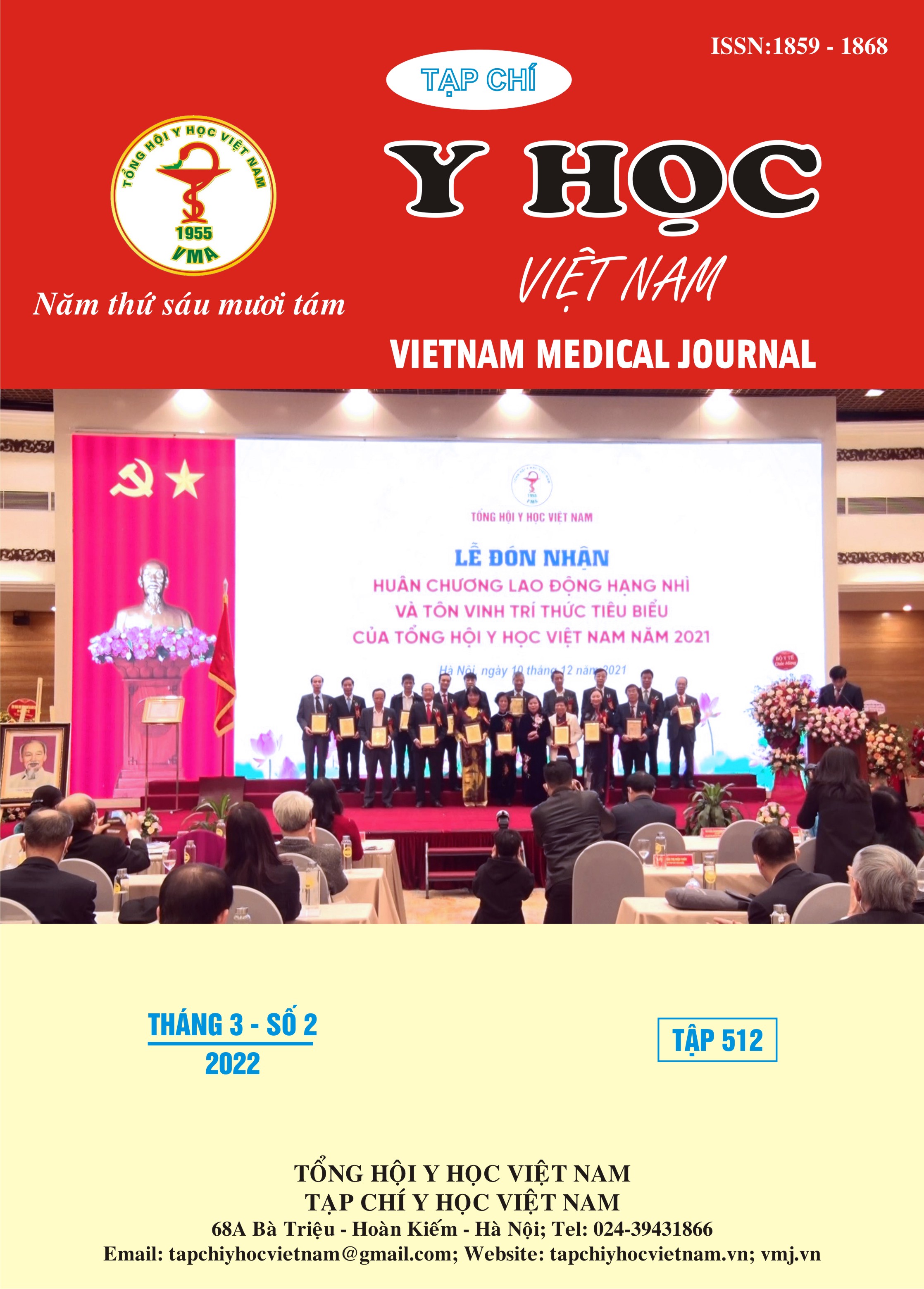RESEARCH ON THE CURRENT SITUATION OF MEDICAL SOLID WASTE MANAGEMENT AT CAO BANG PROVINCIAL GENERAL HOSPITAL IN 2021
Main Article Content
Abstract
Objects: Assessing the current situation of medical solid waste (MSW) management at Cao Bang Provincial General Hospital in 2021. Subjects and Methods: Instruments, means of sorting and collection at 23 clinical and 5 paraclinical departments, means of transport, storage area, and hazardous waste treatment area of MSW. Medical staff/workers directly involved in sorting, collection, transportation, storage and treatment activities of MSW; research: 23 clinical departments, 5 paraclinical departments of Cao Bang provincial general hospital; cross-sectional study design combining quantitative and qualitative methods. Results: equipment for classification and collection of MSW is relatively complete and up to standards, from bags to containers for each different type of waste with safety regulations (92.9% - 100%), collection tools are fully equipped by the hospital to meet almost 100% of the needs of the department, equipment, facilities for storage and treatment of MSW of the hospital are fully equipped; percentage of medical staffs who properly classify infectious waste, sharp waste, and sharp infectious waste correctly (86.6% -100%); ordinary wastes that are recyclable and non-recyclable, the rate of correct classification into appropriate colored bags (50.0% - 79.1%) depends on the job location. Conclusions: 92.9% - 100% of the faculties are equipped with sufficient equipment and tools for the classification, collection and transportation of hazardous waste, 4/28 faculties have enough waste collection bins of the prescribed colors; fully equipped storage and handling areas; rate of waste classification practice of hospital medical staff: 57.4%; the stages of collection, transportation, storage and treatment meet the requirements.
Article Details
Keywords
medical solid waste, medical staffs, hospital
References
2. Bệnh viện Đa khoa tỉnh Cao Bằng (2020). Báo cáo tổng kết công tác năm 2020, phương hướng, nhiệm vụ năm 2021.
3. Tổng cục Môi trường (2015), Tổng quan về các áp lực lên môi trường nước ta hiện nay và một số định hướng, giải pháp nhằm giảm thiểu ô nhiễm môi trường thời gian tới. Hội nghị môi trường toàn quốc, tháng 9/2015.
4. Bộ Y tế - Bộ Tài nguyên Môi trường (2015), Thông tư liên tịch số 58/2015/TTLT-BYT-BTNMT quy định về quản lý chất thải y tế.
5. Tâm NTT (2019), “Thực trạng quản lý chất thải rắn y tế và một số yếu tố ảnh hưởng tại bệnh viên đa khoa tỉnh Bắc Ninh năm 2019”, Luận văn Thạc sỹ Quản lý bệnh viện, Trường Đại học Y tế công cộng.
6. Minoglou M, Gerassimidou S, Komilis D (2017), Healthcare waste gen-eration worldwide and its dependence on socio-economic and envi-ronmental factors. Sustainability; 9(220):1-13.
7. Ansari M, Ehrampoush MH, Farzadkia M, Ahmadi E (2019). Dynamic assessment of economic and environmental performance index and generation, composition, environmental and human health risks of hospital solid waste in developing countries; a state of the art of review. Environ Int;132:105073.


